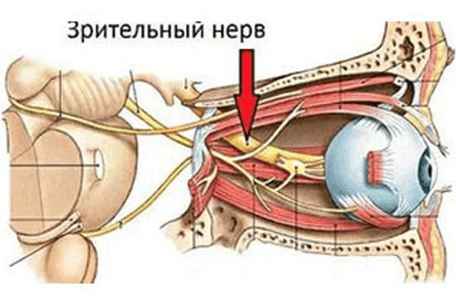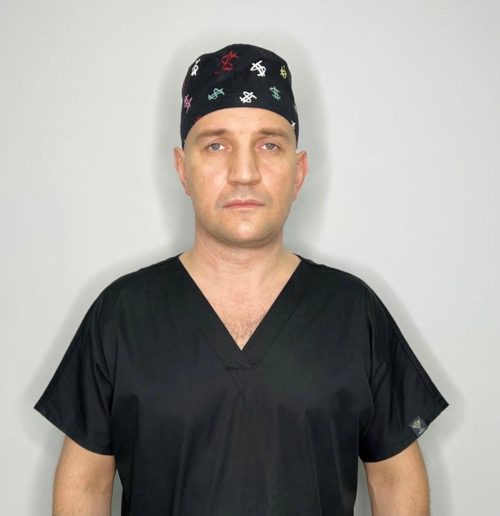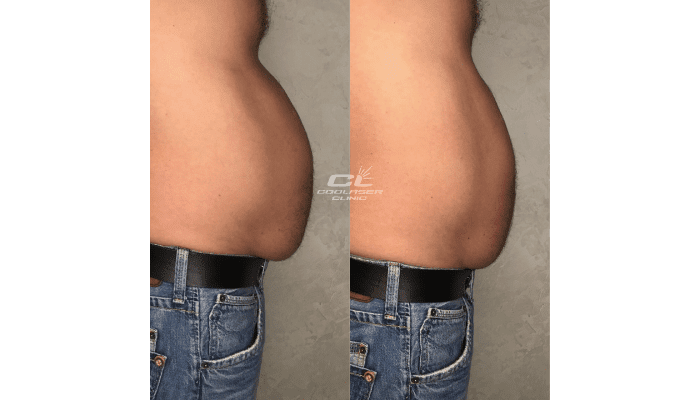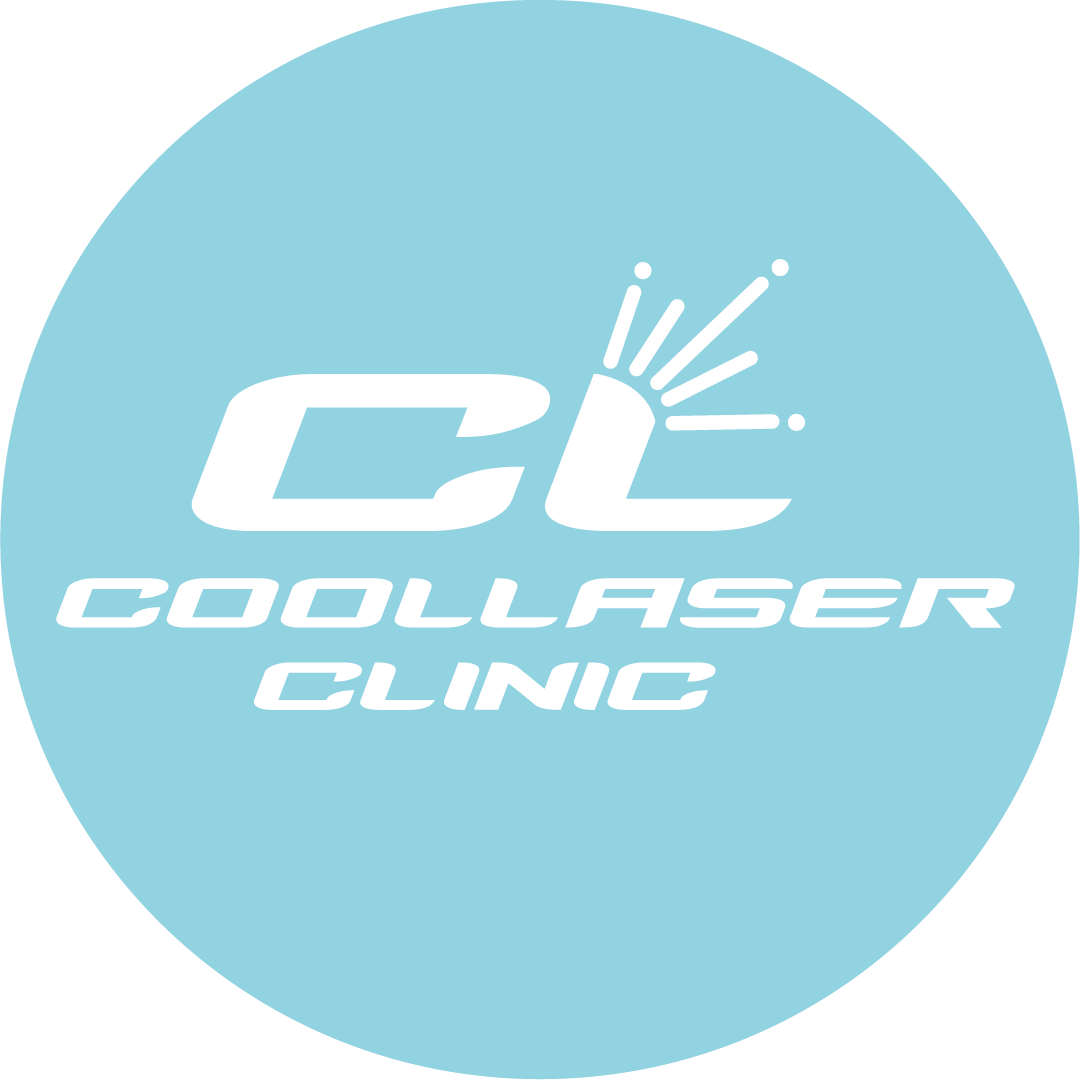Treatment of optic nerve atrophy with stem cells in Kiev
Treatment of optic nerve atrophy with stem cells is one of the most effective ways to correct vision. Full or partial optic nerve atrophy significantly reduces the quality of life, affecting almost all aspects of human activity.
Eyes and vision are one of the three main senses for gathering and processing information from the world around us. This is why it is so important to take care of your eyes from a young age and to see a doctor at the first warning signs.

Coolaser Clinic doctors have the necessary experience and knowledge, as well as modern medical technology for effective treatment.
Contents:Contents:
- Optic Nerve Atrophy – What It Is
- Disease Symptoms
- An important thing about optic atrophy
- Stem Cell Therapy
- Stem cell sources
- Feedback about SC optic atrophy treatment
- Problem of treating optic atrophy
- Experience of optic atrophy treatment at Kulaser Clinic
- How optic atrophy is treated at Coolaser
- Frequent questions about therapy for optic atrophy
Atrophy of the optic nerve – what is it?
Optic atrophy is the final stage resulting from pathologic damage to the optic nerve all the way from the retina to the lateral optic nerve. This process involves the death of retinal ganglion cell axons that make up the optic nerve.
In simple words: Atrophy means irreversible deterioration leading to loss of function of the optic nerve: the organ that transmits information from the eyeball to the brain.
In order for the information received after the visual pathway from the outside world to be converted into a clear image, many processes are involved. The fiber bundle of the oculomotor nerve plays a major role in this.
As a result of many factors, the optic nerve atrophy, i.e. stop performing its functions. Chronic diseases, pathological changes, injuries – all this can lead to such an unfortunate result as loss of vision.
Fig1. The optic nerve.

Nowadays there is no 100% treatment for optic atrophy. The innovative method of stem cell treatment shows high results of therapy and a large percentage of vision improvement.
Symptoms of the disease
Symptom Description Table:
| Symptom. | Characteristics. |
|---|---|
| Decreased visual acuity | Vision becomes less clear due to damage to the optic nerve; problems with focusing the gaze on objects; correction with glasses is not successful. At the same time, is not associated with anomalies of the ocularapple. |
| Visual field loss | A change in the visual field where it appears that part of the visual field has been blocked; in the initial phase may be less noticeable due to abnormalities in the nervous system. |
| Color perception disorder | Difficulty in perceiving red and green colors due to changes in the condition of the ocular nerve. |
| Туннельное зрение | Loss of the ability to see around, over time, a narrow field of vision may indicate brain problems. |
| Скотома (слепое пятно) | Appears when the central part of the optic nerve is affected, which may be due to changes in the nervous system. |
| Головные боли и боли при движении | Unpleasant sensations in the head and when moving the eyes, associated with ocular nerve atrophy. They may also be associated with the presence of arterial hypertension. |
Below is a diagram showing the stages of visual field reduction, in the disease Optic Nerve Atrophy.

Important about optic atrophy
Medical science knows these facts about the disease:
- This is not an independent disease. It almost always develops against the background of other disorders and is characteristic of any age.
- Atrophy is a partial destruction of the nerve fibers of the optic nerve, which is expressed by partial loss of vision (reduced field of vision) and leads to total blindness.
- Men and people over the age of 50 are more commonly affected, but it can also develop in childhood.
- In case atrophy of the optic nerve fibers is not treated, the atrophy spreads to the other fibers and they die. As a consequence: a person ends up losing vision and becomes completely blind.
Stem Cell Treatment.
Treatment of optic atrophy with stem cells (SC) in practice shows high results:
- improvement of vision by 15-30% depending on the degree of the disease;
- regaining the ability to distinguish colors;
- In some cases, it can restore vision up to 90%.
Treatment is selected strictly by a doctor in a personal consultation with the patient. The doctor will study the tests, examinations, as well as collect the necessary anamnesis.
Stem cell therapy is carried out as a course. The duration and composition of the course is determined only by the doctor.

What you need to know about this method of treatment:
- The therapy is performed with MSC stem cells.
- The drug is administered while the patient is conscious under local anesthesia.
- The procedure is virtually painless.
- Microsuture placement at the end of the procedure.
- Antiseptic treatment.
- Redness of the eye is possible 1 day after injections and completely goes away by 3 days.

Sources of SC.
For stem cell injections or transplants, doctors are more likely to use 2 sources:
- Donor (hematopoietic stem cells). These cells are derived from the umbilical cord blood of a donor.
- Self-derived MSCs. Self-derived stem cells can be obtained from a patient’s bone marrow or adipose tissue.

Interesting Facts!
Why we use mesenchymal stem cells:
- MSCs (mesenchymal stem cells) divide easily and self-renew.
- Among other types of stem cells, MSCs are ideal for transplantation in optical neuropathies and optic atrophy.
- There are virtually no adverse reactions.
- MSCs are derived from the patient’s own adipose tissue or bone marrow
- Mesenchymal cells have regenerating and immunostimulatory properties.
- The treatment is suitable for patients of any age with any form and degree of atrophy.
Reviews about treatment of optic atrophy with stem cells
Reviews of patients with Treatment of optic nerve atrophy after MSC transplantation speak for themselves. Some patients got back 30% of their lost vision, others regained the ability to distinguish colors.
Treatment of optic atrophy: reviews of real patients
After the surgery, many people leave positive feedback. For example, this patient thanked the doctors for a 20% improvement in the condition of his right eye.

The problem of treating optic atrophy
The following pathologies may be the causes of the development of this disease:
- infectious diseases;
- craniocerebral traumas to the brain;
- mechanical damage to the eyelid;
- neurodegenerative and autoimmune diseases (multiple sclerosis, etc.).
As a rule, patients turn to ophthalmologists. In most cases, this disease is veiled by clinical symptoms of other concomitant diseases and is not diagnosed in time.
Often ophthalmologists will NOT treat optic atrophy. The reason for this is that there are no medications or effective treatment protocols for this condition.
The only way the scientific community has high hopes is through cellular regenerative therapies.
Our experience with stem cell treatment of optic atrophy
For the last few years we have been successfully treating this disease using mesenchymal stem cell preparations. More than a dozen patients have had positive results of treatment.
The course of therapy included repeated systemic injections of MSC preparations, as well as local subsenon and peribulbar injections of cell suspensions. These injections were performed in the affected area – in the areas close to the eye.
The results of treatment were noted for 6-12 months from the beginning of treatment.
We also observed long-term results at 24-36 months after treatment.
How optic atrophy is treated at Coolaser Clinic
There are several steps in the treatment process:
- Initial free consultation with your doctor by phone or online
- Consultation in the clinic and matching the results of the tests with the anamnesis (the cost of the consultation is included in the cost of treatment) After studying the results of the tests, the patient is assigned a day, to obtain a small dose of his own fat tissue surgically.
- Collection of biomaterial (own fat): lipoaspiration. Performed by a triage surgeon in an operating room setting.
- Sending the biomaterial to the biolaboratory for further scaling and stem cell cultivation in the city of Ternopil.
- Scaling and culturing for 20 to 30 days
- Return of cultured cells ready for administration to the patient in Kiev
- Sytem injection of stem cells: intravenously and locally. The dose of SC and the number of repeated injections will depend on the patient’s individual protocol in the individual clinical case.

In the course of treatment, we used different protocols to correct this disease. Our practical experience has shown that the most effective and minimally traumatic was the combined treatment according to the protocol developed by us.
The standard treatment regimen included three or sometimes five times systemic intravenous injection. At the rate of 1 MLN of stem cells per kilogram of body weight, as well as local subtenon injections of cell suspensions into the affected area in the amount of 2 to 5 MLN.
As a rule, the cell suspension is injected intravenously and also into the area behind the eyeball. Stem cells are delivered to the affected area, where they transform into atrophied fibers and restore their function.
The peculiarity of our treatment course was that we tried to choose a gentle regimen of repeated local injections.
Typically, re-injections were performed every 7 days after the procedure.
Such a low-traumatic technique was argued by the fact that in the post-injection period of the first 3-7 days, patients experienced slight edema of the adjacent tissues to the injection area, as well as corneal redness.
In some cases, the swelling bothered the patient for up to 15 days, so we postponed the re-injection procedure for this period. That is, the re-injection was postponed for 15 days instead of 7 days.
Frequent questions about optic nerve cell therapy (FAQ):
What is the optic nerve?
The optic nerve is a pair of nerves that transmit signals from the eye to the brain.
What causes optic atrophy?
Optic atrophy can be caused by various factors such as trauma, infection, genetic factors, etc.
What is optic atrophy?
Optic atrophy is a condition in which the nerve fibers of the optic nerve die off, resulting in impaired vision.
Can the quality of visual acuity be restored after optic atrophy?
Unfortunately, regaining visual acuity after optic atrophy can be very difficult. However, early treatment can help slow the progression of the disease.
What is a field of vision?
The visual field is the area that a person can see without moving their eyes.
What are stem cells?
Stem cells are cells that can differentiate into different types of cells in the body. They have the potential to be used to treat a variety of diseases, including optic atrophy.
How is optic atrophy treated using stem cells?
When stem cells are used to treat optic atrophy, the cells are injected into the affected area where they can help repair damaged nerve fibers. This can improve optic nerve function and visual acuity.
What is optic atrophy and what are its symptoms?
Optic atrophy is a condition in which the nerve fibers of the optic nerve die off, resulting in impaired vision. Symptoms may include loss of vision, narrowing of the visual field, decreased visual acuity, etc.
How is optic atrophy treated with cell therapy?
Cell therapy uses cells to replace or repair damaged tissue in the body. When treating optic atrophy with cell therapy, stem cells are injected into the affected area where they can help restore optic nerve function.
What are the results of treating optic atrophy with stem cell or cell therapy?
Results can vary depending on many factors, including the cause of optic atrophy and the extent of damage. However, the use of stem cells and cell therapy can help improve optic nerve function and visual acuity.
Can optic atrophy lead to vision loss?
Yes, optic atrophy can lead to vision loss. Therefore, early treatment is very important to prevent progression of the disease and to preserve vision.
What should I do if I have symptoms of optic atrophy?
If you have symptoms of optic nerve atrophy, you should contact an experienced ophthalmologist for professional consultation and treatment. Treatment of optic atrophy in Kiev with stem cells and cell therapy is an effective method that can help restore optic nerve function and visual acuity.
How long does it take to treat optic atrophy with stem cell or cell therapy?
The duration of treatment can vary depending on many factors, including the cause of optic atrophy, the extent of the damage, and treatment methods. This can range from 2 x – 3 months, to a year or more. A consultation with an ophthalmologist can help determine the best length of treatment for your particular case.
What are the side effects of stem cells or cell therapy?
Side effects can vary depending on many factors, including cell type, dose, and administration methods. However, stem cells are usually well tolerated by patients and side effects can be minimal.
What are the chances of full recovery of vision after treatment for optic atrophy?
The chances of full recovery of vision after treatment for optic atrophy may be low. However, early treatment can help slow the progression of the disease and preserve the remaining visual acuity.
Can optic atrophy be prevented?
Some causes of optic atrophy, such as trauma, infections and genetic factors, cannot always be prevented. However, a healthy lifestyle, regular checkups with an eye doctor, and timely treatment of other conditions can help reduce the risk of developing optic atrophy. It is also important to avoid injuries and other risk factors that can damage the optic nerve.
What other treatments are available for optic atrophy?
In addition to stem cells and cell therapy, other treatments such as laser therapy, hormone therapy and others are available. A consultation with an ophthalmologist can help determine the best treatment method for your specific case.
What are visual fields and what problems can occur when they are disturbed?
Visual fields are areas that a person can see without moving their eyes. A visual field disorder can cause narrowing of the visual field, blindness in some areas, and other vision problems.
What other conditions can lead to optic nerve damage?
Besides optic atrophy, other diseases such as glaucoma, diabetic retinopathy and others can also lead to optic nerve impairment.
What is visual acuity and how can it be measured?
Visual acuity is the ability to distinguish fine details in an image. It can be measured with the help of special tables that show letters or numbers of different sizes and contrast.
What other methods can help keep your optic nerve healthy?
It is important to lead a healthy lifestyle, including proper nutrition, moderate physical activity, and regular checkups with an eye doctor. You can also avoid smoking, contact lenses and other risk factors that can damage the optic nerve.
How often should I get preventive checkups from an eye doctor?
It is recommended that you have a preventive eye exam with an eye doctor at least once a year, especially if you are at risk of developing eye diseases such as optic atrophy, glaucoma, diabetic retinopathy, and others.
How can you determine the risk of developing optic atrophy?
The risk of developing optic atrophy can be related to a variety of factors such as heredity, age, injury, and other medical conditions. A consultation with an ophthalmologist can help determine your individual risk and recommended prevention methods.
What are electrophysiologic techniques and how can they be used in the treatment of eye diseases?
.Electrophysiologic techniques are methods that are used to measure electrical activity in the tissues of the eye and brain. They can be used to diagnose and treat various eye diseases such as optic atrophy, glaucoma and others.
Injections near the eye – is it painful?
The procedure is performed under local infiltration anesthesia. This anesthesia consists of applying a 33G micro-needle into the outer tissues of the lower eyelid. After this pre-microinjection, no pain is felt during cell injection.
Have there been any cases of vision impairment after SC injections?
Sometimes, due to pronounced edema, patients experienced a several percent worsening of vision for 2-3 days. After the edema subsided, the situation returned to the previous level, and then the vision improved within a month.
Bis it true that stem cells don’t help?
In cases of long-standing pathology more than 20 years, age groups of patients (old age), total optic nerve damage, stem cell therapy was ineffective. Improvements were observed insignificantly from 1 to 2 percent, which we regarded as an ineffective method of treatment.
Cost of treatment of optic atrophy
The price of treatment is determined depending on the clinical situation and can range from 30,000 to 99,000 UAH. The following packages of services are most often used:
- «Local therapy»
- Standard
- Standard PLUS
- Premium MAX
Contraindications to performing cell therapy
The course of therapy cellular nerve atrophy has almost no contraindications. To identify individual contraindications, it is necessary to undergo a doctor’s consultation.
The major limitations include :
- malignant tumors,
- epilepsy,
- infectious diseases in the active stage,
- pregnancy and lactation
Treatment of optic atrophy with stem cells is an innovative opportunity to restore lost vision.
To make an appointment for a consultation, you can leave a request on the website or call (068) 938 03 03 03. Doctors of Kulazer Clinic conduct prophylaxis and treatment of optic nerve atrophy with stem cells at the address: Kiev, Pechersk district, Konovaltsa str. 32B.
Calculate the cost of the procedure “Treatment of optic atrophy”
Leave your contact information and we will contact you for an evaluation of the procedure

Sources:
Research Clinic MAY
HelthLine -an online medical journal)
| Program Standard. Treatment with own adipose tissue stem cells. Therapy with autologous MSCs (60 mln.). Program of two-stage systemic administration. (Single dose 30 mln, Repeat injection - after 5 days). | 58 000 UAH | |
| Local therapy program. Local injections of own adipose tissue stem cells. Local therapy with autologous MSCs (30 mln.) | 30 000 UAH | |
| Standard Plus Program. Allogeneic MSC therapy (systemic administration of 100 mln). The program is a two-stage administration. (single dose of 50 mln), repeated injection of 50 mln - after 5 - 10 days). | 99 000 UAH | |
| Программа Премиум МАКС. Клеточная трансплантация суспензии фетоплацентарного комплекса. Четырехэтапная программа введения (системное введение три раза внутривенно, два раза подкожно). Программа ускоренного лечения большими дозами комбинированных препаратов стволовых клеток. | 420 000 UAH |
Specialists in the procedure

Kovalchuk Andrey
Associate Professor, surgeon, biotechnologist
Photo materials

Useful articles

Optic atrophy treatment with stem cells in Kiev Optic atrophy treatment with optic stem cells is one of the most effective ways of vision correction. Complete or partial atrophy of […]

Treatment of diabetes mellitus and its consequences in Kiev Diabetes mellitus is a condition in which the body cannot properly digest carbohydrates (sugar and starch), the body’s main sources of […]

Top 15 best plastic surgeons, whose patients after surgery are satisfied with the results The best plastic surgeons of Kiev, who made it to the top 15 in which after […]

Today we will talk about the treatment of metabolic syndrome with stem cells in Kiev Kiev is a city of European level and European opportunities. We all want to look […]

Effective rejuvenation procedures, what to choose? Effective facial rejuvenation procedures, which is better? We welcome you in the coming year 2021. The holidays are over, which means it’s time to […]
Reviews







